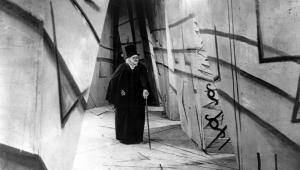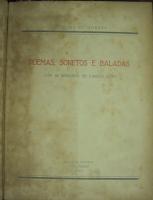The pirate's song: analysis of the poem by José de Espronceda
The poem The pirate's song of José de Espronceda (1808-1842) is one of the best known of the spanish romanticism. Be part of the book Poetry, published in 1846 after the death of its author.
It is a composition about freedom Y the independence which is part of the five poems that José Espronceda dedicates to the beings marginalized from society, which he wrote in protest: the pirate, the beggar, the executioner, the Cossack and the death row.
Let's see, next, what this poem is about through an analysis of it.
Poem The pirate's song
With ten cannonry per band,
Wind in their sails,
he does not cut the sea, but flies,
a brig sailboat.
Pirate ship they call,
for the bravery of him, The Fearful,
in every known sea,
from one to the other border.The moon in the sea shines,
the wind moans on the canvas,
and he lifts in soft movement
waves of silver and blue;
and see the pirate captain,
singing happily at the stern,
Asia on one side, Europe on the other,
and there in front of Istanbul:«Sail, my sailboat,
without fear,
that neither enemy ship
no storm, no bonanza
your course to twist reaches,
nor to hold your courage.Twenty dams
we have done
in spite
of English,
and they have yielded
their banners
hundred nations
To my feet."That is my ship my treasure,
that freedom is my god,
my law, the force and the wind,
my only homeland, the sea.«There they wage fierce war,
blind kings
for one more span of land;
that I have here for mine
how much the wild sea encompasses,
to whom no one imposed laws.And there is no beach
be anyone,
nor flag
of splendor,
do not feel
my right
and breastfeed
to my worth. "That is my ship my treasure,
that freedom is my god,
my law, the force and the wind,
my only homeland, the sea.At the voice of "ship is coming!"
is to see
how it turns and is prevented,
at full speed to escape;
that I am the king of the sea,
and my fury is to be feared.In the dams
I divide
I caught it
equally;
I only want
for wealth
the beauty
non-rival.That is my ship my treasure,
that freedom is my god,
my law, the force and the wind,
my only homeland, the sea.I am sentenced to death!
I laugh;
do not leave me luck,
and to the same that condemns me,
I will hang from some entena,
perhaps on his own ship.And if I fall
what is life?
For loss
I already gave it,
when the yoke
of the slave,
like a brave,
shook.That is my ship my treasure,
that freedom is my god,
my law, the force and the wind,
my only homeland, the sea.They are my best music
niches,
the din and trembling
from the shaken cables,
from the black sea the bellows
and the roar of my cannons.And from the thunder
when they are violent,
and from the wind
when rebranding,
I sleep
sedate,
lulled
by sea.That is my ship my treasure,
that freedom is my god,
my law, the force and the wind,
my only homeland, the sea.
Analysis of the poem The pirate's song
The pirate as the protagonist
This poem has a rebellious man as the protagonist. A pirate who, from the description offered in the verses, is feared by all. However, he is not afraid of anything. But what does his presence here mean?
Some research suggests that the figure of the pirate symbolizes the libertarian spirit of Espronceda. Certainly, the author fought against the absolutism of the time, which led him to be even imprisoned and exiled. This fact leads to think that The Pirate's Song it manifests the "rebellious" ideals of the author himself in his time.
Coincidentally, the writer chooses a marginal character in society as the protagonist and not only describes him in third person in the first stanzas, but makes it even more important by using the first-person voice in the rest of the poem.
The pirate is associated with adventure, also with the fearsome. In this creation we perceive a man who seeks freedom and who is not accountable to anyone, he is independent.
This character could also be considered the archetype of rebellion. The pirate represents the romantic attitude, the hero's opposition to the world around him. A marginalized but free protagonist who is the victim of a class society.
Freedom and independence by flag
Freedom and independence are two values that this character defends, they also represent the central theme of the poem. But how is the freedom that the pirate seeks?
It should be noted that the protagonist represents the rebellious spirit of romanticism, in his words the confrontation with society and its laws is guessed, which he does not want to abide by. He even describes himself in one verse as "on whom no one imposed laws."
The pirate defends a freedom that does not contemplate social impositions. We also see in the poem elements that lead us to this idea of freedom: the sea or the ship that sails "smooth sailing."
With this, the individual wants to get rid of all conventionalism, detach himself from the meaning traditional homeland, in some way, he denies the idea of homeland when he affirms “my only homeland, the sea". It thus follows from the pre-established borders.
Criticism of the society of his time
In reality we can say that what this poem hides is a critique of the society of his time. We see here the opposition of the "romantic hero", the pirate. The individual versus society. This is well reflected in the chorus:
That is my ship my treasure,
that my God is freedom,
my law the force and the wind,
my only homeland, the sea.
In these verses four elements stand out: treasure, God, law and country. In the first verse he makes clear his anti-materialistic spirit, he dismisses riches.
In the second verse, he puts freedom above all else, it is a supreme value.
Later, in the third, he confirms that for him there are no laws, only those that govern nature.
Finally, in the last verse of the chorus, he confirms his rejection of any link to a fixed place.
The setting: nature as the setting
Nature is also very present in the creations of romanticism. The pirate's song is a sample of it. Nature and its elements serve, in this case, to reflect the mood of the romantic hero. Here the environment is not presented as a peaceful place, but rather all the elements that are described imply a dynamic and wild environment (the wild sea).
Formal structure of the poem
The pirate's song by José Espronceda is composed of seventeen stanzas or strophic units, of which the first four constitute an introduction.
The introduction It is composed of five strophic units of:
- 2 Italian leaflets abbcdeec (8),
- 1 sextilla of broken foot a8 b4 a8 c8 c8 b8,
- 1 Italian leaflet abbcdeec (8) and
- 1 chorus quatrain assonance
The rest of the poem is made up of five nuclei of three stanzaic units of:
- 1 sextilla of broken foot a8 b4 a8 c8 c8 b8,
- 1 Italian four-syllable leaflet abbcdeec (4) and
- 1 chorus quatrain assonance
The anomalies presented in verses 40, 66, 76 and 94 (flat instead of sharp), it is a characteristic of the irregularities of romanticism therefore it should not be considered a casual defect.
Adaptations of the poem
The poem of The pirate's song it has been interpreted and narrated countless times. Some musical versions of him are known, including this rock song from 2014 by the Spanish band Tierra Santa.
About the Author
Jose de Espronceda he is one of the representatives of romanticism in Spain. He was born in Almendralejo (Badajoz) on March 25, 1808 into a wealthy family.
In his youth she moved to Madrid with his family, where he specialized in Humanities.
Espronceda tried to defeat absolutism, for which he served prison time and was exiled.
Among his poetic creations, one of the most recognized is The Pirate's Song, however the following also stand out:
- The Salamanca student (1840)
- Devil world (1840)
- Poetry (1840)
If you liked this article, you may also be interested in: Romanticism



